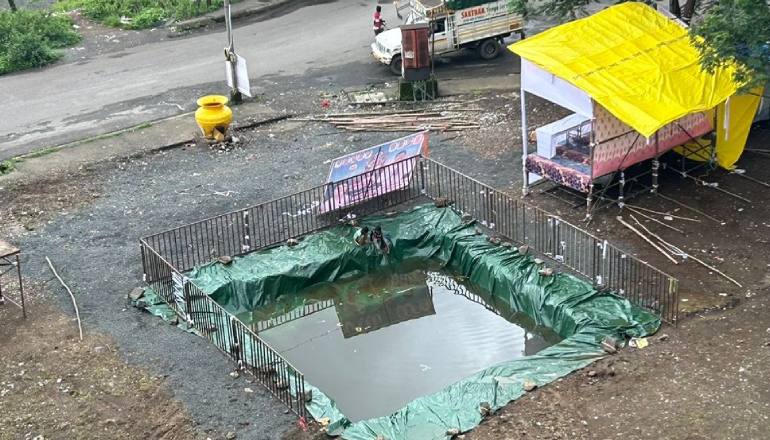I have been vocal about the required essential mindset change to handle climate change and adapt sustainable practices in our day-to-day lives. I am happy to note the acceptance level among the public is on the rise.
I am talking about the much-celebrated Ganapati festival in Maharashtra. All these years, we have seen the administration struggling two-fold:
- Convincing the devotees to switch from PoP to eco-friendly idols
- Opting to immerse the idols in artificial ponds over natural water bodies
The underlying message is to celebrate the festival in a sustainable manner and also optimize the use of water
Being in Mumbai for more than 2 decades and a journalist who has covered the immersions of Ganpati Bappa from 1.5 days to the last day, I can confidently say the present-day change is now apparent. Compared to 2006, when one could count the artificial ponds on their fingers, the Brihanmumbai Municipal Corporation or BMC established 350 artificial ponds in 2021 — a year marred by COVID-19. From there, the numbers are increasing. And the people are also choosing nearby immersion points over the polluted oceans to immerse their beloved Bappa.
The trend is fast-picking pace across geographies. The photo you see along with this write-up is one of such artificial ponds created by Panvel City Municipal Corporation (PCMC) in a residential area. Undoubtedly a welcome move.
How an artificial pond is better than a natural water body
- It helps preserve the natural water body
- Insulates the water bodies from pollution
- It saves the administration from desilting/cleaning
- Allows people with access in their own vicinity
- Reduces travel time and overcrowding on roads
For those unaware of the size and scale of the Ganapati festival, in Mumbai city alone, the immersions can go upwards of 2 lakhs over the ten days. That is just one city in Maharashtra. One of the critical places that manufacture the idol is Pen, a village in Raigad district that, on average, creates 6 lakhs to 7 lakh idols per year. Likewise, the state has multiple villages that manufacture the Ganesha idols. This year’s data is yet to be published officially, but I hope this will help you understand the magnanimity and the scale of the Ganapati festival.
Now, I can confidently say the mindset of the people has changed. We see more devotees opting for eco-friendly idols with no artificial colours, are immersed in artificial ponds, and using natural flowers over plastic flowers for decoration.
The list is really long. I want to rise and applaud all you devotees who are taking these tiny but effective steps while religiously following all the traditions, keeping the fervour of the festival alive, as well as the purpose and intent to save our next generation and resource-scarce natural bodies!











